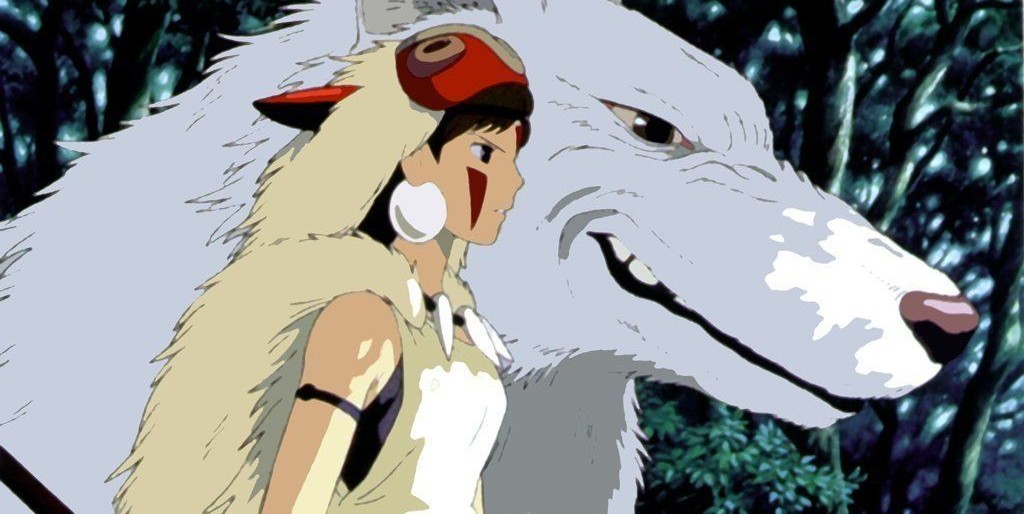‘The Last of the Mohicans’ meets ‘Star Wars’ meets ‘An Inconvenient Truth’ in this, the film that really put Studio Ghibli on the map internationally and was, upon its release in 1997, the most financially successful theatrical anime in Japan’s history, indeed becoming the highest grossing Japanese film of the year. It’s set centuries past in feudal Japan, and mixes strands of history with Japanese mythology in a tale of the perversive power of hatred, anger and fear, and the dangers of throwing nature out of balance. Princess Mononoke herself has a wonderful introduction, and indeed the entirety of her first major scene I would without hesitation enter into my list of all time favourite film moments, with her charging into an enemy fort quite determined to take on everyone in it single-handedly. One of The Red Dragon’s biggest criticisms of the film is simply that she does not feature enough. In fact, the main character is actually Ashitaka, who exists as our hero, advocating reason and diplomacy as he is abruptly sent on a quest to the heart of the forest, wherein he will encounter mankind mining the earth for iron, and in doing so waging war on the spirits of the forest – some of whom have raised Mononoke (whose name is actually a general term for spirit or monster in Japanese) since she was a mere baby.
Should you be thinking of showing this to your children, there is bloody violence, including decapitations, but it is of the sort more likely to have your kids thinking ‘cooool’ rather than being disturbed by it, worth bearing in mind nonetheless, otherwise this presents an exciting and memorable parable. It features another good score from the wonderful Joe Hisaishi, who does many of Ghibli’s films, though the colour scheme is a little less vibrant than elsewhere in their collection. Ghibli itself (pronounced Gee-Bow-Lee in Japanese, Jibly in the west) comes from the Arabic word for the Sirocco, a Mediterranean wind, with the idea being their work would come as a dramatic wind of change in the industry; which indeed has been borne out as true. Here we see perhaps the studio fully establishing their voice, and yet still retaining some traditions of Japanese anime – a young female still manages to get herself covered in writhing tentacles, for example, although here they represent subversion due to hatred, rather than sexual desire.
The hand drawn style of animation is very easy to love, and in many ways it is the product of the drive and doting attention of director and Ghibli co-founder Hayao Miyazaki. In fact, he invested so much in this film he decided to retire once it was finished, although he couldn’t resist coming back to do ‘Spirited Away’ (and then several others) years later, whose success would eclipse even that of Mononoke. Due to time constraints this was the first film from the studio to introduce the partial use of computers, via the technique of ‘digital paint’, since then a practical balance was sought between traditional methods and new technology, that ultimately ended with a complete return to hand craft for all elements of animation (currently the only major studio to be doing so), beginning with ‘Ponyo’ in 2008. Also a signature imprint of Miyazaki are his strong, independent, loveable, and interesting female characters, from Mononoke to fort and iron works commander in chief Lady Eboshi, and the former prostitutes she has cheerfully working the bellows of her smelting forge. Reputedly, this stems from his seeing the animated film ‘Hakujaden’ (‘The Tale of the White Serpent’) in his youth and very much falling in love with the female protagonist.
Comparing the Japanese version with English subtitles, to the English language version with a host of big name actors doing the voice overs, the overall acting is better in the Japanese one (although Minnie Driver is great as Lady Eboshi in the other), however the audio translation (scripted by author Neil Gaiman) is better and makes more sense of the story, especially for non-Japanese audiences, than the subtitled translation, so that overall the English language version is to be recommended. It’s a little on the long side (when Harvey Weinstein, co-founder of Miramax, suggested it be abridged for release in the States, Miyazaki sent him a Katana blade with a note saying ‘No Cuts’, which simply underscores the awesomeness of Miyazaki) but this is animation with a real story and real point to make, one without any traditional ‘bad guy’, and some blood, the occasional ‘bitch’, and ex prostitutes aside, it aptly demonstrates how animation can be made to appeal to both young and old audiences alike.

